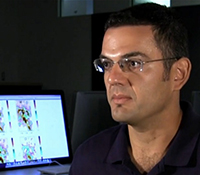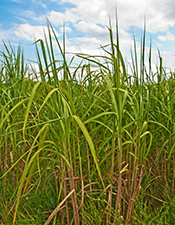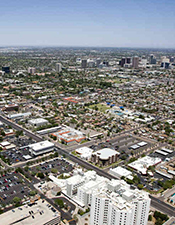October 30, 2012
Q&A with Matei Georgescu
 Note: Matei “Matt” Georgescu is a Senior Sustainability Scientist at the Global Institute of Sustainability, assistant professor in the School of Geographical Sciences and Urban Planning, and adjunct faculty at the School of Mathematical and Statistical Sciences. His work focuses on the environmental impacts of renewable energy expansion, as well as the water and climate effects resulting from large-scale urbanization. Prior to joining ASU in 2010, he conducted research in the Center on Food Security and the Environment at Stanford University and, while at Rutgers, was the recipient of a NASA Earth System Science Fellowship.
Note: Matei “Matt” Georgescu is a Senior Sustainability Scientist at the Global Institute of Sustainability, assistant professor in the School of Geographical Sciences and Urban Planning, and adjunct faculty at the School of Mathematical and Statistical Sciences. His work focuses on the environmental impacts of renewable energy expansion, as well as the water and climate effects resulting from large-scale urbanization. Prior to joining ASU in 2010, he conducted research in the Center on Food Security and the Environment at Stanford University and, while at Rutgers, was the recipient of a NASA Earth System Science Fellowship.
When did sustainability become an important part of your research?

Although my research has gradually integrated sustainability elements from my days as an undergraduate student at Rutgers University, it wasn’t until I arrived at ASU in the summer of 2010 that sustainability became a special focus. ASU’s campus-wide emphasis and concerted efforts toward sustainability-related research were essential in facilitating this focus.
What are your most important sustainability-related research projects?
First, I am a principal investigator of a five-year bioenergy project funded by the National Science Foundation under its Water Sustainability and Climate initiative. This project, which includes Sustainability Scientists from across ASU, focuses on the long-term sustainability of growing perennial grasses for ethanol production in the United States. These perennial grasses, such as miscanthus and switchgrass, offer significant advantages over their annual competitors, such as maize. Among their benefits: no impact on existing food resources, little need for agricultural management or fertilizer, and enhanced carbon sequestration. In addition, as we learned from some of our earlier work with colleagues at Stanford University, these perennial grasses can lower near-surface temperatures relative to their annual counterparts.

As part of our research, we’ll identify where to plant and grow perennial grasses, where they produce the greatest hydro-climatic benefits (e.g., by decreasing temperatures without desiccating the soil or lowering the water table depth), and where they can provide sufficient biomass yield and economic advantages for large-scale deployment. We’ll also assess how much domestic fossil fuel energy may be offset through this renewable energy pathway. These are all vitally important issues with considerable domestic energy and food security implications.
Second, I’ve been working with two other Sustainability Scientists at ASU to assess the effects of urban expansion on climate. By focusing on Arizona’s “Sun Corridor,” the fastest growing megapolitan in the U.S., we found that urbanization-induced warming is just as important as greenhouse gas-induced climate change. We also discovered that efforts to mitigate urban heat may produce negative side effects. For example, the practice of painting roofs white to reflect heat is one of the most practical ways to reduce urban heat, but we’ve found it can also lead to a significant reduction of rainfall. Truly sustainable development will have to consider such impacts and their tradeoffs.
How will your research affect policy or other important decisions?
My research specifically focuses on mitigating the impacts of climate change and ensuring an energy-secure future. Results of the research will directly inform policy decisions. My larger responsibility as a scientist, however, is to conduct high impact and use-inspired research and then communicate the methodologies and significance of this work to students, faculty, and policymakers. By doing this, we can help leaders base important decisions on scientific knowledge.
What is the world sustainability challenge that concerns you most?
In one word, it is resources. Food is one example. The quantity of food that our society wastes is unsettling and is directly related to issues of global food insecurity. Water, arguably our most precious resource, is similarly squandered. For example, the practice of midday irrigation allows water to evaporate at a much higher rate than it would during cooler times of day. To move toward sustainability, it is critical we rethink how to make optimal use of our most important resources.

